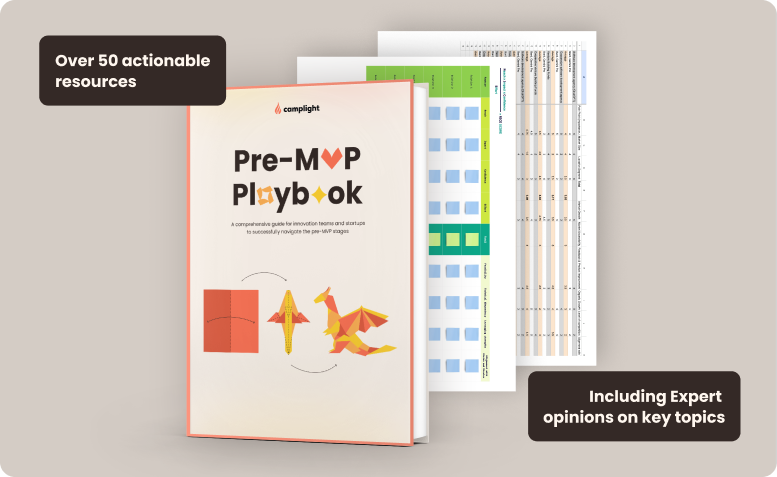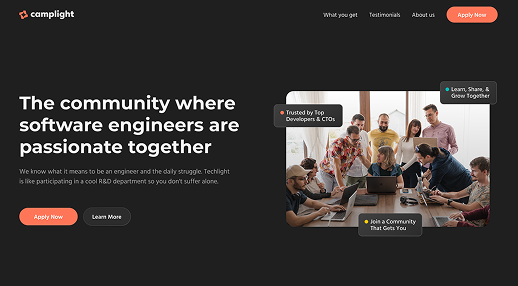We fear that Artificial Intelligence might make us forget how to think. The more we use ChatGPT, the more we worry about losing our mental skills. This fear misses the point. Artificial Intelligence doesn’t erase our thinking abilities. It shifts what we think about. Some of the complicated and solved problems we once struggled with become simple. This frees the mind to think about more complex problems that are harder to solve.
Will Artificial Intelligence Make Us Intellectually Lazy?
This fear is real. And it isn’t without historical precedent. Advances in technology are always focused on replacing a human ability with a tool. This has trade offs – we lose an ability but become more efficient at performing the action for which the tool was developed. Socrates feared writing would weaken our memory. Critics thought calculators would destroy math skills. And recently we have experienced the “Google Effect” – we remember how to find information rather than the information itself.
Now, Artificial Intelligence leads us to “cognitive offloading.” We hand over some of the thinking to the technology instead of doing it ourselves. Even though Artificial Intelligence can’t think, it imitates this quite successfully. There are also some early studies. One of these shows that people who rely heavily on AI tools score lower on critical thinking tests. A Microsoft study found that workers who trust Artificial Intelligence too much think less critically about the outputs they receive. Young people are also quite affected. Especially students who start to rely on AI to take their tests for them and do their homework.
So, yes, using Artificial Intelligence regularly has a strong potential to make us cognitively impaired. As long as we trust what it does for us entirely. However, there’s also another option. To be responsible. To know that the human-in-the-loop bears the consequences of bad decisions and faulty output. This is the simplest action one could take to get the benefits of Artificial intelligence and prevent intellectual laziness. But there is a more powerful concept that we can use.
Abstraction.
Understanding Abstraction in Thinking
Abstraction is a fundamental cognitive process where we simplify complex ideas by focusing on essential properties while ignoring irrelevant details. It allows us to recognize patterns, form concepts, and solve problems at higher levels of understanding. Throughout history, humans have created tools that extend our cognitive abilities by handling lower-level details so we can think at higher levels of abstraction.
Research from the Extended Mind Theory, pioneered by philosophers Andy Clark and David Chalmers, suggests that our cognitive processes don’t stop at the boundary of our skulls – they extend into the external tools we use. These “cognitive artifacts” reshape how we think.
Before calculators, mathematicians spent significant mental effort on arithmetic. After calculators became widespread, those same mathematicians could focus on higher-level mathematical concepts, leaving the computational details to their tools. This isn’t a loss of mathematical ability but an elevation of mathematical thinking to a more abstract level.
The development of computers in the mid-20th century represents another major abstraction shift. Computers automate logical and mathematical operations that previously required significant human mental effort. This hasn’t made humans less logical – it has allowed us to apply logic at more abstract levels, developing complex systems like AI that operate on principles beyond what an individual human could manually compute.
Each new technological extension of our minds follows a pattern: initial fear about lost abilities, followed by adaptation and ultimately cognitive enhancement if the extension proves its worth. We don’t lose our ability to think – we change how we think, offloading routine cognitive tasks to our tools while developing new mental capabilities.
This pattern suggests that AI represents another step in this progression. Just as calculators didn’t eliminate mathematical thinking but elevated it, Artificial Intelligence won’t eliminate human thinking but will raise it to new levels of abstraction.
Raising the Abstraction Level
Artificial Intelligence fundamentally changes our relationship with information by handling lower-level cognitive tasks, allowing humans to focus on higher-level thinking. This shift mirrors previous technological transitions but operates at an unprecedented scale and speed.
The most powerful Artificial Intelligence implementations aren’t those that replace human thinking but those that complement and enhance it. AI systems excel at processing vast amounts of data and identifying patterns that would overwhelm human cognition, freeing us to think more abstractly about the meaning and implications of those patterns.
While there’s evidence that AI-assisted coding leads to quality issues – as noted in the GitClear study – the longer-term trend points toward a fundamental shift in how developers work. In order to successfully work with AI, engineers would have to rely more on tests and smaller steps. Which are proven methods for developing high-quality software systems.
This transition mirrors previous shifts in programming, from machine code to assembly language to high-level languages. Each step raised the abstraction level, making previously complex tasks routine and enabling more sophisticated software development.
As we continue this transition, the key challenge isn’t preserving our ability to perform tasks that Artificial Intelligence can now handle – it’s developing our capacity to think effectively at these new, higher levels of abstraction. This represents not a diminishment of human cognition but its evolution to meet the challenges of an increasingly complex world.
Novel Problems Will Always Challenge Us
Despite advances in AI-assisted software development, the boundary of engineering challenges continues to expand. As AI solves previously difficult coding problems, new challenges emerge that require distinctly human qualities of creativity, architectural thinking, and contextual understanding.
The fundamental problems of software engineering are not so much technological as sociological. This insight remains true in the age of AI – while tools like Cursor can generate code, the most challenging aspects of software development involve understanding human needs and designing systems that effectively address them.
In software engineering, novel problems possess characteristics that make them resistant to Artificial Intelligence solutions:
Jevons Paradox in software development: Economist William Stanley Jevons observed that when technological progress increases the efficiency of resource use, consumption of that resource tends to increase rather than decrease. In software engineering, this manifests as increased demand for more complex software as Artificial Intelligence makes development more efficient. As we build software tools that make us more productive, we just raise the bar of what we want to accomplish.
Architectural complexity: While Artificial Intelligence is good at generating code for well-defined problems, it struggles with architectural decisions that require deep domain understanding and consideration of long-term maintainability. Developers should focus on creating designs resistant to implementation details – a task requiring human judgment and experience.
Shifting quality expectations: As AI handles routine coding tasks, quality expectations rise. Uncle Bob argues that “the only way to go fast is to go well.” So you can’t have a successful product without quality. And quality is hard for an Artificial Intelligence to build in. It requires a human who understands what’s quality in the users’ eyes and how to achieve it via technical excellence.
This dynamic between AI capabilities and novel engineering challenges drives a natural progression:
From coding to design thinking: As Artificial Intelligence handles more routine coding tasks, software engineers naturally shift toward higher-level design thinking.
Mob programming as cognitive enhancement: Collaborative programming approaches like mobbing complement Artificial Intelligence tools by combining multiple perspectives to solve novel problems.
Test-Driven Development evolution: As AI generates more code, the human practice of TDD becomes even more critical. Artificial Intelligence can generate code, but humans must define what success looks like through tests. And the tests are the only thing that can guide the AI away from regressions.
Partnering with Artificial Intelligence
The most effective approach to Artificial Intelligence isn’t replacement but partnership – using Artificial Intelligence as an amplifier for human thinking while maintaining our core cognitive abilities. Here are specific practices that help establish this balanced relationship.
AI-Assisted Development with Verification
One of the most powerful approaches to Artificial Intelligence-assisted development is combining Artificial Intelligence code generation with rigorous verification through test-first development.
Instead of asking the Artificial Intelligence to generate code directly, start by writing examples that define the expected behavior. Prompt the Artificial Intelligence to convert these examples to executable test cases while implementing the specification at the same time. These tests will make sure that the Artificial Intelligence can’t run amok in implementing the necessary functionality and there won’t be any regressions as you move forward.
Working in Small Steps
Breaking work into small, discrete steps and feeding them one-by-one to Artificial Intelligence significantly improves outcomes. This approach aligns with established software engineering best practices like continuous integration and iterative development. This requires getting better at a wholly different skill: learning how to split work and delegate.
Rapid Prototyping with Artificial Intelligence
Artificial Intelligence accelerates the prototyping process, allowing businesses to test ideas before committing significant resources. Tools like Replit and Lovable enable rapid creation of functional prototypes while keeping specifications under human control.
Pretotyping with Artificial Intelligence
Pretotyping – testing market interest before building products – becomes significantly more efficient with Artificial Intelligence assistance.
AI-Generated Landing Pages: Create landing pages that describe potential products and measure interest through sign-ups or pre-orders. Tools like GPT-4 can generate compelling copy, while Artificial Intelligence design tools can create professional-looking mockups.
Synthetic User Research: Use Artificial Intelligence to simulate potential user interviews based on market research, helping identify key questions and concerns before conducting actual user research.
Content Creation and Curation
Artificial Intelligence transforms content creation from a writing-focused process to a curation and insight-focused one. You focus on identifying trends, interesting connections, and novel insights, then use Artificial Intelligence to synthesize these into cohesive content.
Maintaining the Balance
Across all these practices, several principles ensure effective human-AI partnership:
Verification First: Always establish verification mechanisms before generating content or code with Artificial Intelligence.
Clear Ownership: Maintain human ownership of specifications, requirements, and acceptance criteria.
Continuous Learning: Regularly review Artificial Intelligence outputs to understand its capabilities and limitations.
Quality Focus: Never sacrifice quality for speed, even with Artificial Intelligence assistance.
By following these practices, we can harness Artificial Intelligence’s power while maintaining the human thinking skills that drive true innovation.
As we navigate our relationship with Artificial Intelligence, the fear of forgetting how to think gives way to a more nuanced reality: we’re not losing cognitive abilities but evolving them to higher levels of abstraction. This evolution mirrors previous technological shifts but accelerates the pace dramatically. By implementing specific practices – from test-driven Artificial Intelligence development to AI-assisted pretotyping – we maintain human ownership of the creative process while leveraging Artificial Intelligence’s computational power.
The key isn’t avoiding Artificial Intelligence but establishing a balanced partnership where verification precedes generation, quality remains non-negotiable, and humans focus on goal-setting and strategy. In this paradigm, Artificial Intelligence doesn’t diminish our thinking but elevates it, allowing us to tackle increasingly complex challenges that were previously beyond our reach. The frontier of human thought remains intact – it simply moves to higher ground.






